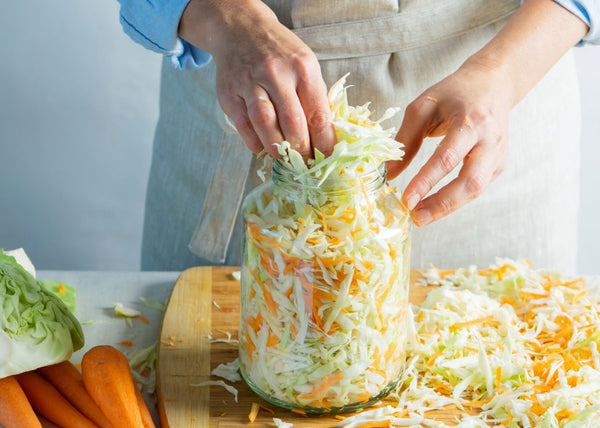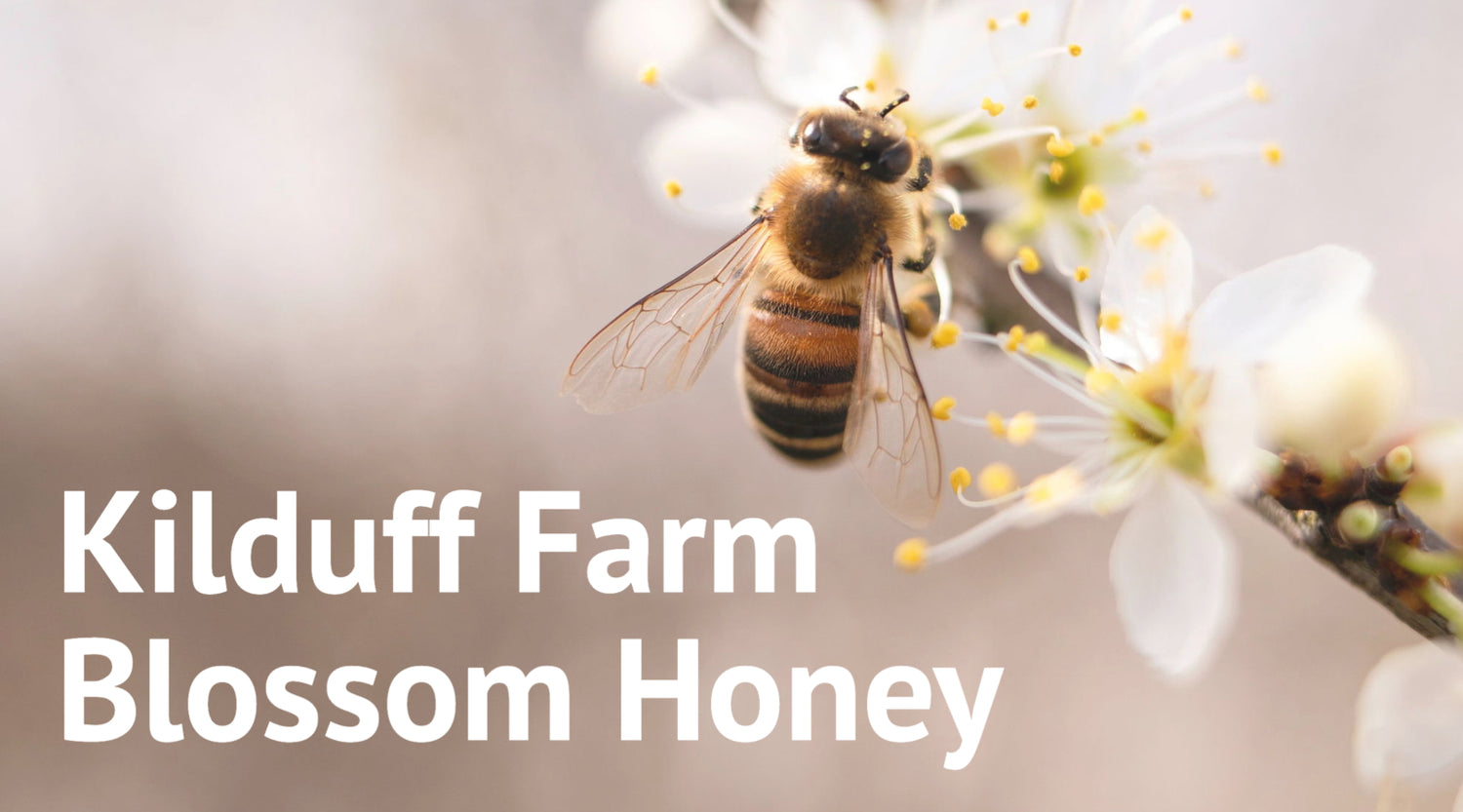Welcome to the Love Your Local Larder Podcast! A podcast that celebrates local produce with the people who cook and grow it.
Blog written by Louise McKie.
In this episode, Suzie meets Ruth Munro from Edinburgh Fermentarium. An award-winning and sustainable producer of fermented foods, based in the heart of Leith. The company began in 2017 and has creatively broadened the range of fermented flavours available to us in Scotland, using only raw products and a natural fermentation process that has a host of health benefits for immunity and digestion.
The inspiration for Edinburgh Fermentarium came from a barefoot walk up Arthur’s Seat in Edinburgh, where Ruth learned about these ‘amazing healing foods’ from another participant. What then began as a personal exploration of how fermented foods could benefit her own health, spurned an evangelical passion for them. A serendipitous succession of events in Ruth’s personal life then led her to turn this passion into a business and so, the Edinburgh Fermentarium was born!

In this conversation, Ruth and Suzie discuss the rise of fermentation in popular culture, noting that the public have become much more educated in the health benefits of fermented foods such as kimchi and kombucha. Historically, the only fermented product eaten in Scotland was cheese; now we have incorporated so many more, with inspiration from other cultures, such as Eastern Europe and Korea. Edinburgh Fermentarium respects the traditions of these roots and are advocates of the practices that have emerged from these.
We learn about the different types of fermented foods, namely kimchi, kombucha, sauerkraut and water kefir. These are made by mixing vegetables with the correct percentage of salt, massaging the salt into the vegetables, then packing in jars with liquid. Key here is to pack the vegetables under the level of the liquid. Ruth gives us a handy mantra for this: “Below the brine and all is fine.” The food is then, generally, fermented for 4 weeks.

While all products from Edinburgh Fermentarium are made through fermentation, the process differs slightly. For example, kimchi and sauerkraut both involve the creation of an anaerobic environment to encourage growth of good bacteria, whilst water kefir creates an aerobic environment. Regardless of the process, healthy strains of bacteria are created. These aid our digestion, particularly where a range of fermented products are eaten, adding multiple strains of healthy bacteria to the gut microbiome.
Ruth offers fermentation workshops from her studio in Leith (you can find out more here), but also shares some tips for making fermented products at home. She suggests using any vegetable that can be eaten raw and considering the amount of liquid in each. The more liquid present, the less effort required in massaging the salt into the flesh of the vegetable. All that’s required is a jar, a mixing bowl, a knife and chopping board! Although, take care with calculating the percentage of salt needed as some internet recipes can be misleading.

Ruth’s aim for her products has always been about flavour and appearance. She has worked tirelessly to create fermented products that look beautiful and offer a wide variety of flavours that are a wonderful accompaniment to any meal. Edinburgh Fermentatium’s range include award-winning produce, winning multiple Great Taste awards. Suzie tastes 6 of these delicious products in the podcast.

Firstly, she tries ‘Thieves’ Drinking Vinegar’, a beautiful bright pink kombucha vinegar that is, initially, fermented for one month, then infused with herbs and spices such as lavender, sage, rosemary, ginger and turmeric for a further month resulting in a delicious vinegar that could be used as a vinegar, cordial or simply as an immunity-boosting shot.
Then, we meet the ‘Mac Kimchi’, Ruth’s spin on a traditional kimchi is completely organic and is recognisable as a kimchi by its reddish colour. This includes Scottish white cabbage, pear, chilli and ginger, resulting in a crunchy and amazingly flavourful dish. The third taste comes from the ‘Stoatin’ Sauerkraut’, a bright yellow dish incorporating cabbage, fresh turmeric and fennel seeds. This is described as more subtle in flavour and a good gateway into fermented foods with a tangy but delicate flavour. Next, Suzie tries some Ginger Kraut; white cabbage with fresh ginger and just a hint of cardamon that would be a beautiful addition to a stir fry or Japanese dish. The penultimate dish is some ‘Cracking Kimchi’, with more traditionally Indian flavours like chilli, ginger and cumin. This product is also allium-free so suitable for anyone following a FODMAP diet. This is a delicious product! Finally, we meet the punchiest of the bunch – the Lemon and Lime Pickle. This is really ‘full-on’ in flavour so best as an accompaniment to crackers and cheese, which it pairs beautifully with.

Suzie was left amazed at the variety of flavours on offer! These can all be purchased from wholefood stores and local farmer's markets in and around Edinburgh, or on their online shop. Edinburgh Fermentarium is expanding, which isn’t surprising given the ingenuity and passion with which Ruth approaches fermented foods. They are, certainly, foods that we’re planning to include more often in our diet and we hope you are as enthused by this conversation as we were. Why not get started on your fermented food journey with this delicious Avocado on Toast recipe topped with Edinburgh Fermentarium's Braw Slaw?





